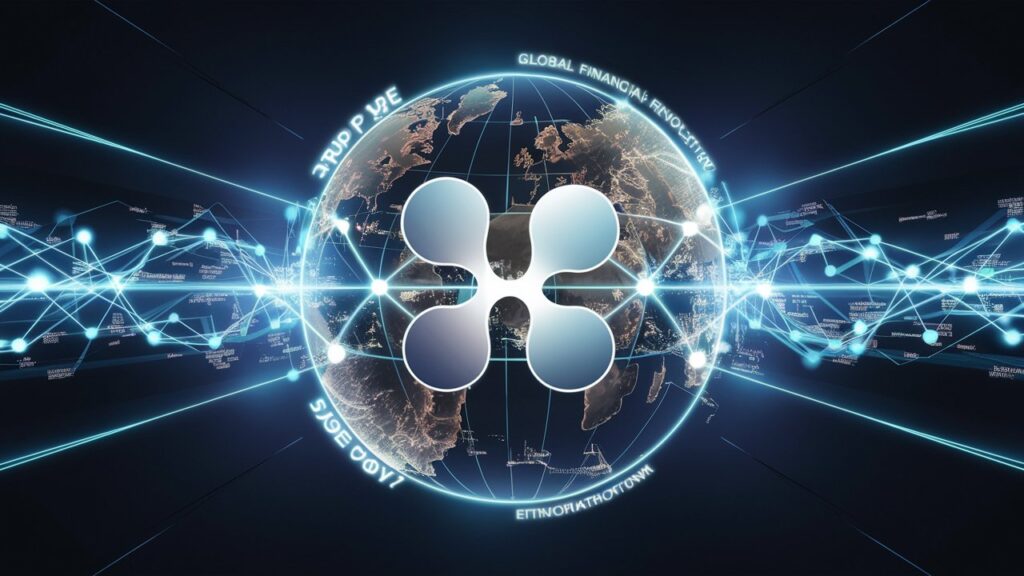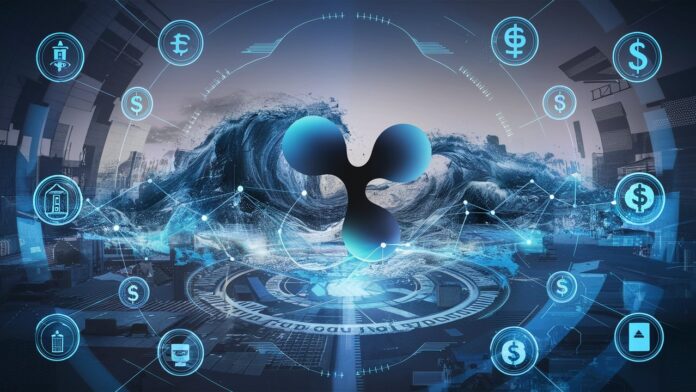Introduction
Ripple represents a transformative force in global finance, merging blockchain innovation with institutional-grade payment solutions. Founded in 2012 as OpenCoin (later rebranded to Ripple Labs), the company developed the XRP Ledger (XRPL), a decentralized blockchain optimized for financial transactions. Unlike purely peer-to-peer cryptocurrencies, Ripple targets systemic inefficiencies in cross-border payments through partnerships with banks, fintechs, and payment providers. Its vision—termed the Internet of Value—aims to enable instant, low-cost value transfers worldwide, challenging legacy systems like SWIFT. Central to this ecosystem is XRP, the native digital asset facilitating liquidity, and RippleNet, the global payment network leveraging blockchain for settlement 1410.
Core Components of the Ripple Ecosystem
1. XRP Ledger (XRPL): The Engine of Innovation
The XRP Ledger is an open-source, decentralized blockchain designed specifically for financial applications. It processes transactions in 3–5 seconds at a cost of 0.00001 XRP (fractions of a cent), handling up to 1,500 transactions per second. Unlike Proof-of-Work blockchains (e.g., Bitcoin), XRPL uses a consensus protocol where independent validators—over 150 globally—verify transactions. These validators, operated by universities, exchanges, and businesses, vote on transaction validity. A transaction is confirmed once 80% agree, ensuring finality without mining. This design makes XRPL energy-efficient and scalable for enterprise use. Key features include:
- Decentralized Exchange (DEX): Built-in liquidity aggregation.
- Tokenization: Support for fiat, commodities, and stablecoins like RLUSD.
- Sustainability: Near-zero carbon footprint 11012.
2. XRP: The Bridge Currency
XRP serves as the XRPL’s native asset, with a fixed supply of 100 billion tokens pre-mined at launch. Its primary functions are:
- Transaction Enabler: Acts as a bridge between fiat currencies, reducing liquidity costs in cross-border transfers.
- Spam Prevention: A small XRP fee deters network spam.
- Regulatory Clarity: In July 2023, a U.S. court ruled XRP is “not a security,” providing significant legal certainty 1411.
Ripple Labs holds ~50 billion XRP in escrow, releasing up to 1 billion monthly to fund development and partnerships. This controlled supply mitigates market volatility 410.
3. Ripple’s Institutional Solutions
Ripple’s B2B offerings integrate XRP and XRPL for real-world finance:
- Ripple Payments: Uses XRP for On-Demand Liquidity (ODL), enabling instant cross-border settlements. Banks avoid pre-funded accounts, cutting capital costs.
- Ripple Custody: Provides bank-grade storage for digital assets, including tokenized real-world assets (RWAs).
- RLUSD Stablecoin: Launched in 2024, this USD-backed stablecoin runs on XRPL and Ethereum, enhancing liquidity for exchanges and fintechs 136.
Table: XRP vs. RLUSD
| Feature | XRP | RLUSD |
| Purpose | Bridge currency, transaction fee | Price-stable payments |
| Value Backing | Utility within XRPL | 1:1 USD reserves |
| Networks | XRP Ledger only | XRPL and Ethereum |
4. RippleNet and Global Adoption
RippleNet connects 300+ financial institutions, including Santander and Bank of America. It standardizes payment messaging, compliance, and settlement. Key advantages:
- Speed: Transfers complete in seconds versus days.
- Cost Savings: Up to 60% lower fees than traditional corridors.
- Financial Inclusion: Enables affordable remittances for unbanked populations 41012.
Addressing Controversies and Challenges
1. Centralization Debates
Critics argue Ripple exerts undue influence via its default Unique Node List (UNL), a validator subset. However:

- Validators are community-operated; Ripple runs only 1 of 35+ default nodes.
- Participants choose their UNL and can reject Ripple’s recommendations.
- The network remains resilient: If 20%+ validators dissent, transactions pause to prevent forks 12.
2. SEC Lawsuit and Implications
In 2020, the SEC sued Ripple, alleging XRP was an unregistered security. The 2023 ruling declared XRP non-security for public sales but deemed institutional sales violative. Outcomes include:
- Market Confidence: XRP relisted on major U.S. exchanges.
- Regulatory Precedent: Clarified asset classification under the Howey Test 111.
3. Scalability and Use Case Expansion
While initially payment-focused, XRPL now supports:
- NFTs: Tokenized assets via XLS-20 standard.
- Automated Market Makers (AMMs): Decentralized liquidity pools.
- Interledger Protocol (ILP): Bridges diverse blockchains for multi-network transactions 612.
Table: Validator Statistics
| Metric | Value |
| Total Validators | 150+ |
| Default UNL Validators | 35+ |
| Ripple-Operated Nodes | 1 |
Benefits and Criticisms
✅ Benefits
- Efficiency: 1,000x faster than Bitcoin, 100,000x cheaper than wire transfers.
- Institutional Trust: Partnerships with central banks and payment giants.
- Sustainability: Negligible energy use vs. proof-of-work blockchains 410.
⚠️ Criticisms
- Escrow Releases: Monthly XRP unlocks can cause selling pressure.
- Regulatory Uncertainty: SEC appeal pending (as of 2025).
- Wallet Complexity: Minimum 1 XRP reserve per address limits spendable balances 710.
Frequently Asked Questions (FAQs)
- Is XRP decentralized?
Yes. The XRPL relies on 150+ independent validators. Ripple cannot unilaterally alter the ledger, and users select their validator sets 12. - What distinguishes Ripple (company) from XRP?
Ripple is a technology firm building payment solutions; XRP is the open-source digital asset powering XRPL. Ripple uses XRP but doesn’t control it 110. - Can RLUSD replace XRP?
No. RLUSD is a stablecoin for predictable settlements (e.g., payroll). XRP facilitates cross-currency liquidity and transaction fees. They complement each other 36. - How does the SEC lawsuit affect XRP holders?
The 2023 ruling secured non-security status for XRP, reducing delisting risks. However, the SEC’s appeal could prolong regulatory uncertainty 111. - Why must wallets hold 1 XRP minimum?
This reserve prevents spam accounts. Exodus and other wallets enforce it; resetting an account recovers 0.8 XRP (minus a 0.2 XRP fee) 7.
Conclusion: The Path Ahead
Ripple stands at a crossroads of innovation and regulation. Its technology—spearheaded by XRPL’s speed and versatility—offers tangible solutions for finance’s friction points. Partnerships with banks and RLUSD’s launch signal deepening institutional adoption. However, regulatory clarity remains pivotal. The SEC case’s outcome could reshape crypto securities law, influencing Ripple’s U.S. growth. As blockchain evolves, Ripple’s success hinges on balancing decentralization with enterprise needs, advancing its mission to build an inclusive, efficient Internet of Value. For investors and institutions alike, Ripple represents not just a cryptocurrency, but a paradigm shift in global liquidity 11012.

